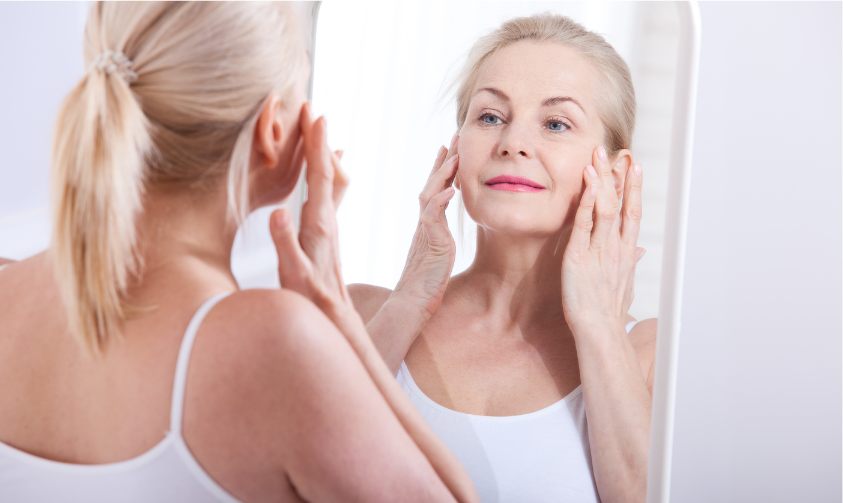Modern dermatological science has revolutionised our understanding of skin ageing processes, enabling the development of targeted interventions that address multiple pathways simultaneously. The integration of topical treatments, professional procedures, and lifestyle modifications creates comprehensive approaches that significantly outperform isolated interventions. Anti ageing solutions encompass both preventive strategies and corrective treatments, each supported by robust clinical evidence and peer-reviewed research. Successful anti-ageing protocols require personalisation based on individual skin characteristics, environmental factors, and genetic predispositions. This exploration examines evidence-based approaches that have demonstrated measurable efficacy in clinical settings, providing practical guidance for implementing multi-modal anti-ageing strategies that deliver sustained improvements in skin health and appearance.
Photodamage Prevention Strategies
Ultraviolet radiation remains the primary extrinsic cause of premature skin ageing, contributing to approximately 80% of visible facial ageing signs. Daily broad-spectrum sunscreen application with SPF 30 or higher provides the most cost-effective anti-ageing intervention available. Zinc oxide and titanium dioxide offer superior photostability compared to chemical filters, though newer chemical sunscreens like avobenzone and octocrylene provide enhanced cosmetic elegance.
Advanced photoprotection strategies extend beyond traditional sunscreens. Antioxidant supplements containing polyphenols, carotenoids, and vitamins C and E provide systemic photoprotection by neutralising free radicals generated by UV exposure. Oral supplementation with 240mg polypodium leucotomos extract demonstrates measurable photoprotective effects in clinical trials.
Protective clothing with ultraviolet protection factor (UPF) ratings offers additional defence against photodamage. Fabrics with tight weaves and darker colours provide superior UV protection compared to loose-weave, light-coloured materials.
Professional Treatment Modalities
Fractional laser resurfacing represents one of the most effective interventions for reversing photoageing signs. CO2 and erbium lasers create controlled microscopic wounds that stimulate collagen remodelling while preserving surrounding tissue. Clinical studies demonstrate 25-50% improvement in wrinkle depth and skin texture following properly administered treatments.
Radiofrequency devices heat dermal tissues to temperatures of 55-65°C, triggering immediate collagen contraction and subsequent neocollagenesis. Monopolar, bipolar, and fractional radiofrequency systems each offer distinct advantages for specific treatment areas and skin types.
Intense pulsed light (IPL) therapy targets chromophores including melanin and haemoglobin, effectively treating hyperpigmentation and vascular lesions associated with photoageing. Multiple wavelengths enable customisation for various skin tones and specific concerns.
Injectable Anti-Ageing Interventions
Neurotoxin injections temporarily paralyse facial muscles responsible for dynamic wrinkles. Botulinum toxin type A demonstrates exceptional safety profiles when administered by qualified practitioners. Treatment effects typically last 3-6 months, with gradual muscle reinnervation requiring repeated applications.
Dermal filler technologies have evolved significantly, with hyaluronic acid-based products dominating the market due to their biocompatibility and reversibility. Cross-linking density and particle size determine product characteristics, enabling targeted treatment of specific anatomical areas and concern types.
Newer filler technologies including calcium hydroxylapatite and poly-L-lactic acid provide longer-lasting results through collagen stimulation mechanisms. These biostimulatory fillers gradually restore volume while encouraging natural collagen production.
Nutritional Anti-Ageing Approaches
Dietary interventions significantly influence skin ageing rates through multiple mechanisms. Mediterranean diet patterns rich in omega-3 fatty acids, antioxidants, and polyphenols demonstrate protective effects against photoageing in longitudinal studies. Specific nutrients deserve particular attention for their skin benefits.
Vitamin C supplementation supports collagen synthesis while providing systemic antioxidant protection. Daily doses of 500-1000mg appear optimal for skin health benefits without approaching upper tolerable limits.
Omega-3 fatty acids, particularly EPA and DHA, reduce inflammatory responses that accelerate skin ageing. Marine-derived omega-3 supplements provide superior bioavailability compared to plant-based alternatives.
Collagen peptide supplementation has gained popularity, with some studies suggesting improvements in skin hydration and elasticity. However, evidence remains mixed regarding oral collagen’s ability to specifically target facial skin improvements.
Sleep and Stress Management
Sleep quality directly impacts skin regeneration processes. Growth hormone release peaks during deep sleep stages, facilitating cellular repair and collagen synthesis. Chronic sleep deprivation elevates cortisol levels, accelerating collagen breakdown and impairing barrier function.
Stress management techniques including meditation, yoga, and regular exercise provide measurable anti-ageing benefits through cortisol regulation and inflammatory marker reduction. Chronic stress contributes to accelerated telomere shortening, a fundamental marker of cellular ageing.
Emerging Technologies
Stem cell therapies represent frontier anti-ageing research, though clinical applications remain limited. Adipose-derived stem cells show promise for facial rejuvenation through growth factor release and cellular regeneration mechanisms.
Platelet-rich plasma (PRP) treatments utilise concentrated growth factors from patients’ own blood to stimulate tissue regeneration. While results vary considerably, some studies demonstrate improvements in skin texture and fine lines following PRP applications.

